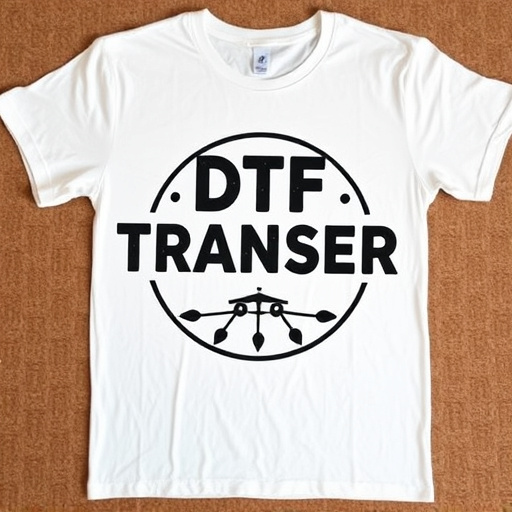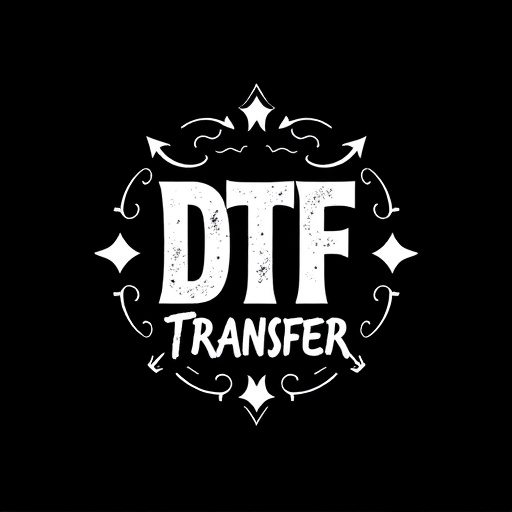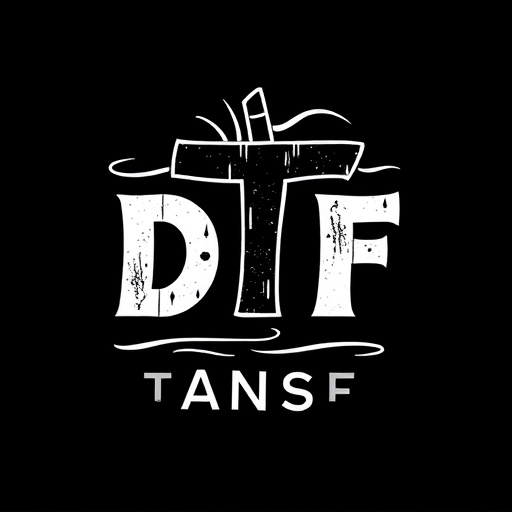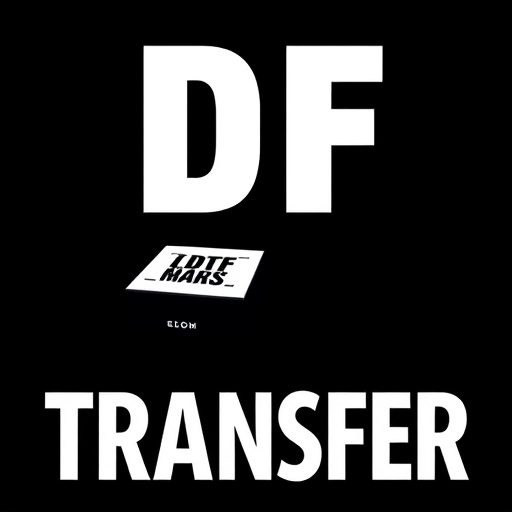Direct-to-Film (DTF) transfer is a cutting-edge printing technique that directly prints designs onto surfaces, eliminating intermediate steps and offering advantages like superior color accuracy, waste reduction, and faster production. It's ideal for businesses aiming to create durable, visually appealing promotional materials or custom products. Choosing the right fabric type (natural vs synthetic, weave structure) ensures optimal print quality while surface preparation (cleaning, priming) is crucial for adhesion. Ink selection (water-based vs solvent-based) impacts durability and substrate compatibility. DTF offers swift production of personalized items across various industries, enhancing brand visibility and customer experiences.
In today’s print industry, Direct-to-Film (DTF) transfer is revolutionizing the way we apply graphics to various surfaces. This innovative technique offers unparalleled versatility, enabling designers to create captivating visuals on a multitude of materials. From vibrant fabrics to intricate signage, understanding the optimal fabrics and surfaces for DTF application is crucial for achieving exceptional results. Explore the ins and outs of this process in our comprehensive guide, delving into the benefits, material choices, preparation techniques, and real-world applications that make DTF transfer a game-changer.
- Understanding Direct-to-Film (DTF) Transfer: Basics and Benefits
- Suitable Fabric Types for DTF Printing: A Comprehensive Guide
- Surface Preparation: Key Considerations for Optimal Adhesion
- Ink Choices and Their Impact on Final Output Quality
- Common Challenges in DTF Application and How to Overcome Them
- Real-World Applications and Case Studies: Highlighting Success Stories
Understanding Direct-to-Film (DTF) Transfer: Basics and Benefits

Direct-to-Film (DTF) transfer is a cutting-edge printing technique that directly applies designs onto various surfaces using specialized equipment and inks. Unlike traditional methods, DTF skips the need for intermediate materials like paper or vinyl, allowing for more precise and vibrant results. This innovative process offers several advantages: higher quality prints with improved color accuracy, reduced waste from cut-out materials, and faster production times.
By eliminating the need for complex lamination or adhesive processes, DTF transfer simplifies the application of graphics onto fabrics, signage, apparel, and even home décor items. The direct printing approach ensures that designs are permanently bonded to the surface, making them durable against fading, peeling, or cracking. This makes DTF an ideal solution for businesses looking to create long-lasting, eye-catching promotional materials or custom-designed products.
Suitable Fabric Types for DTF Printing: A Comprehensive Guide

When it comes to choosing fabrics for Direct-to-Film (DTF) printing, various options cater to different applications and design preferences. The key is selecting materials that offer a smooth surface for optimal ink adhesion and long-lasting color vibrancy. Natural fibers like cotton and linen are popular choices due to their breathability and softness, making them ideal for clothing and textile printing. However, synthetic fabrics such as polyester and nylon also have their merits; they provide exceptional durability and resistance to fading, making them suitable for outdoor signage and high-traffic areas.
For DTF transfers, the fabric’s weave structure plays a significant role in ink penetration and overall print quality. A smooth, flat surface ensures even ink distribution, resulting in crisp, detailed designs. Knitted fabrics, on the other hand, offer stretch and flexibility, which can be advantageous for printing on curved surfaces or items that require movement, like sportswear. Understanding fabric types and their unique characteristics allows printers to make informed decisions, ensuring the best results for each specific project, whether it’s a fashion statement, promotional merchandise, or creative home decor.
Surface Preparation: Key Considerations for Optimal Adhesion
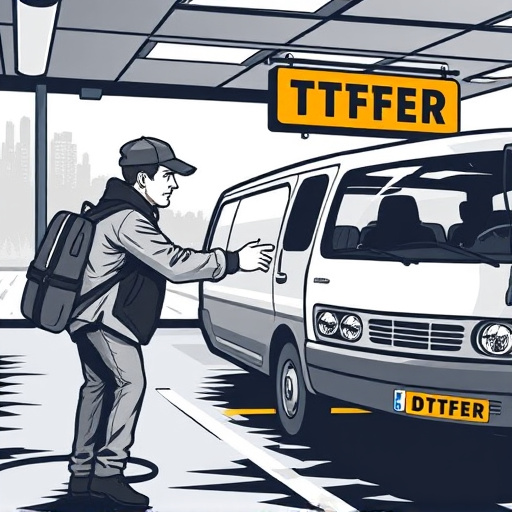
Surface preparation plays a pivotal role in achieving optimal adhesion for direct-to-film (DTF) transfers. Before applying any film, it’s crucial to consider and implement several key factors. First, cleaning is essential to remove any contaminants, oils, or dust that might hinder adhesion. This often involves using specialized cleaners and ensuring the surface is free from residue, which can be checked through visual inspection and touch tests.
Additionally, smoothing the surface and filling any imperfections are vital steps. This can be accomplished with primers or bonding agents designed for DTF applications. These preparations create a uniform base, promoting better contact between the film and the substrate. As a result, it enhances the durability and longevity of the final DTF transfer, ensuring crisp visuals and minimal peeling or bubbling over time.
Ink Choices and Their Impact on Final Output Quality

When it comes to direct-to-film (DTF) applications, ink choices play a pivotal role in determining the quality and longevity of the final output. The right ink ensures vibrant colors, crisp details, and resistance to fading or smudging. Water-based inks, for instance, are popular for their low odor and minimal environmental impact, while also offering good print quality and adhesion to various fabrics and surfaces. On the other hand, solvent-based inks provide deeper colors and greater flexibility in terms of substrate compatibility, though they may require more time to dry and pose potential health and environmental concerns.
For optimal DTF transfer, understanding the interactions between ink and substrate is key. Smooth, non-porous surfaces like polyester or vinyl tend to yield better results with a wide range of inks. Rougher textures or materials like cotton might demand specific ink formulations for improved adhesion. Additionally, considering factors like ink viscosity, drying conditions, and heat treatment post-printing can significantly influence the final print’s durability and aesthetic appeal.
Common Challenges in DTF Application and How to Overcome Them

Direct-to-film (DTF) application is a popular method for printing and applying graphics to various surfaces, but it’s not without its challenges. One of the primary obstacles is ensuring optimal adhesion between the printed film and the substrate, especially on rough or irregular surfaces. To overcome this, preparatory steps like cleaning and priming are crucial. Surfaces must be thoroughly cleaned to remove any grease, dust, or debris that could hinder adhesion, and a suitable primer can help create a bond between the film and the material.
Another common issue is achieving sharp, crisp prints without bleed or smudging, particularly when dealing with fine lines and details. High-quality printing techniques, including using precision printers and appropriate ink types, are essential to mitigate this. Additionally, pre-testing on similar surfaces can help identify potential problems early on, allowing for adjustments in the preparation or printing process to ensure a flawless DTF transfer.
Real-World Applications and Case Studies: Highlighting Success Stories

Direct-to-film (DTF) application has found its place in various industries, revolutionizing the way we produce and personalize items. From promotional merchandise to branded apparel, DTF transfer technology offers speed, efficiency, and exceptional quality. Real-world applications showcase the versatility of this method across different sectors.
For instance, many clothing brands have adopted DTF printing for creating custom designs on t-shirts, hoodies, and accessories. This technique allows them to offer unique, personalized items without breaking the bank. Similarly, in the marketing realm, companies have utilized DTF to create eye-catching promotional products like mugs, phone cases, and bags, leaving a lasting impression on clients. These case studies demonstrate how DTF transfer can enhance brand visibility while providing customers with memorable experiences.








